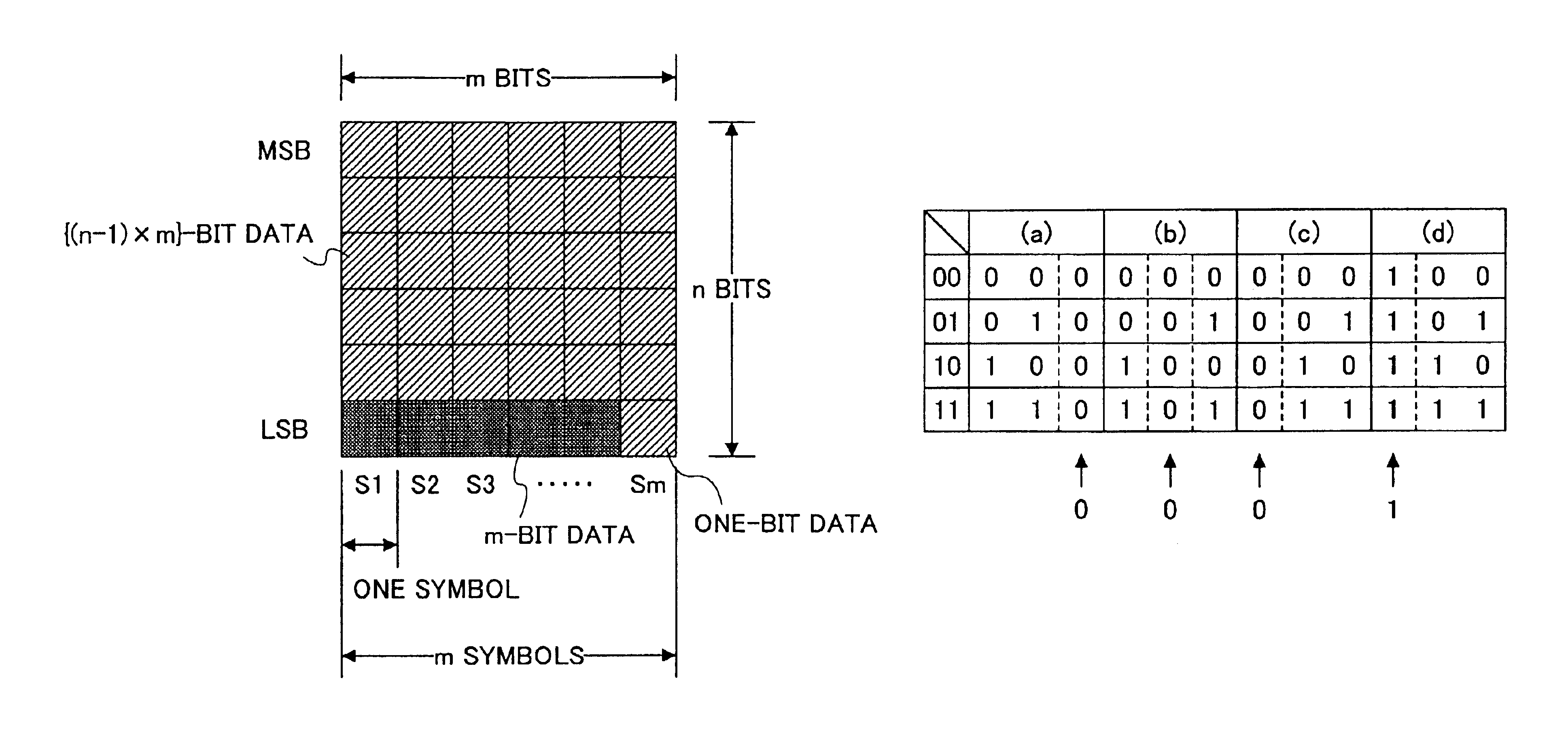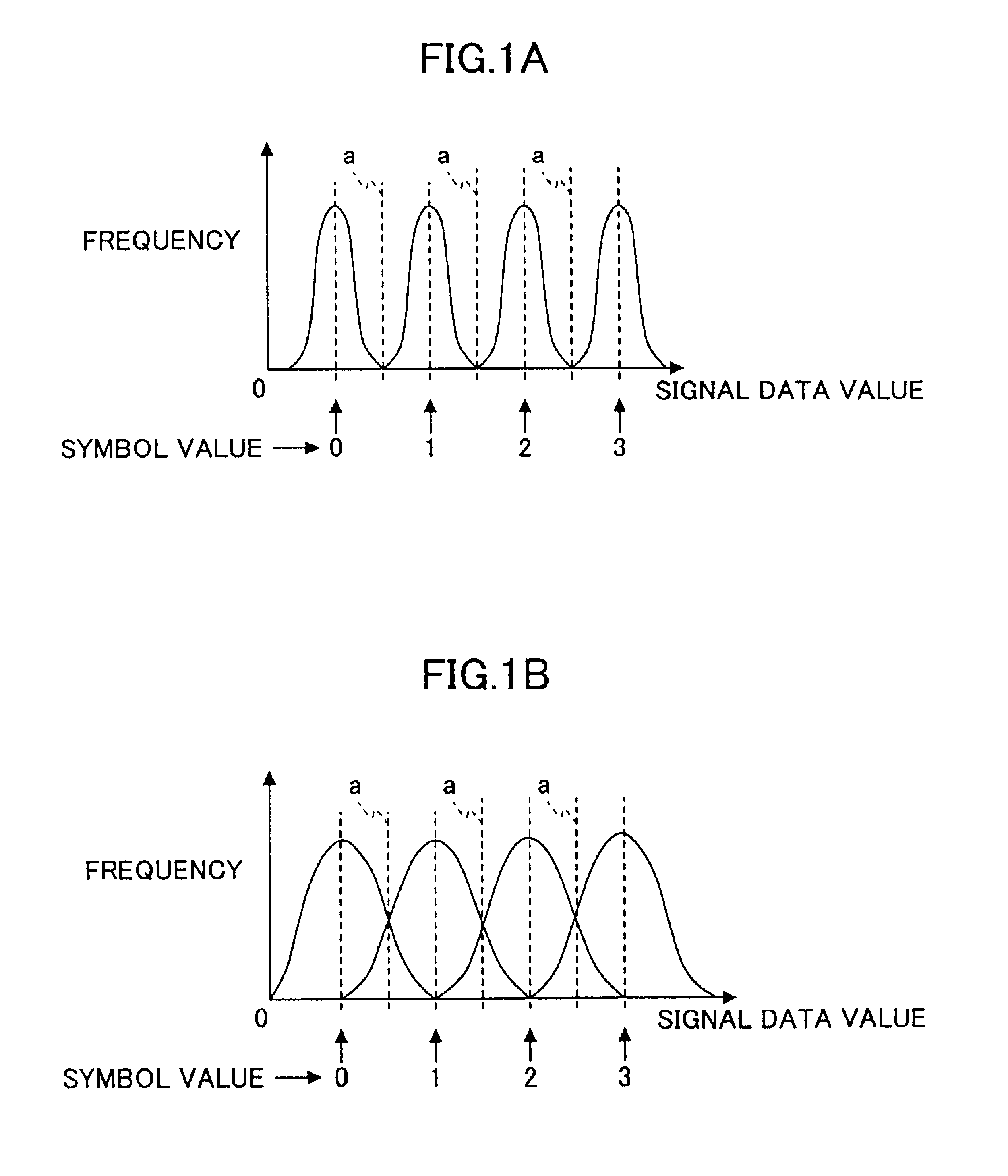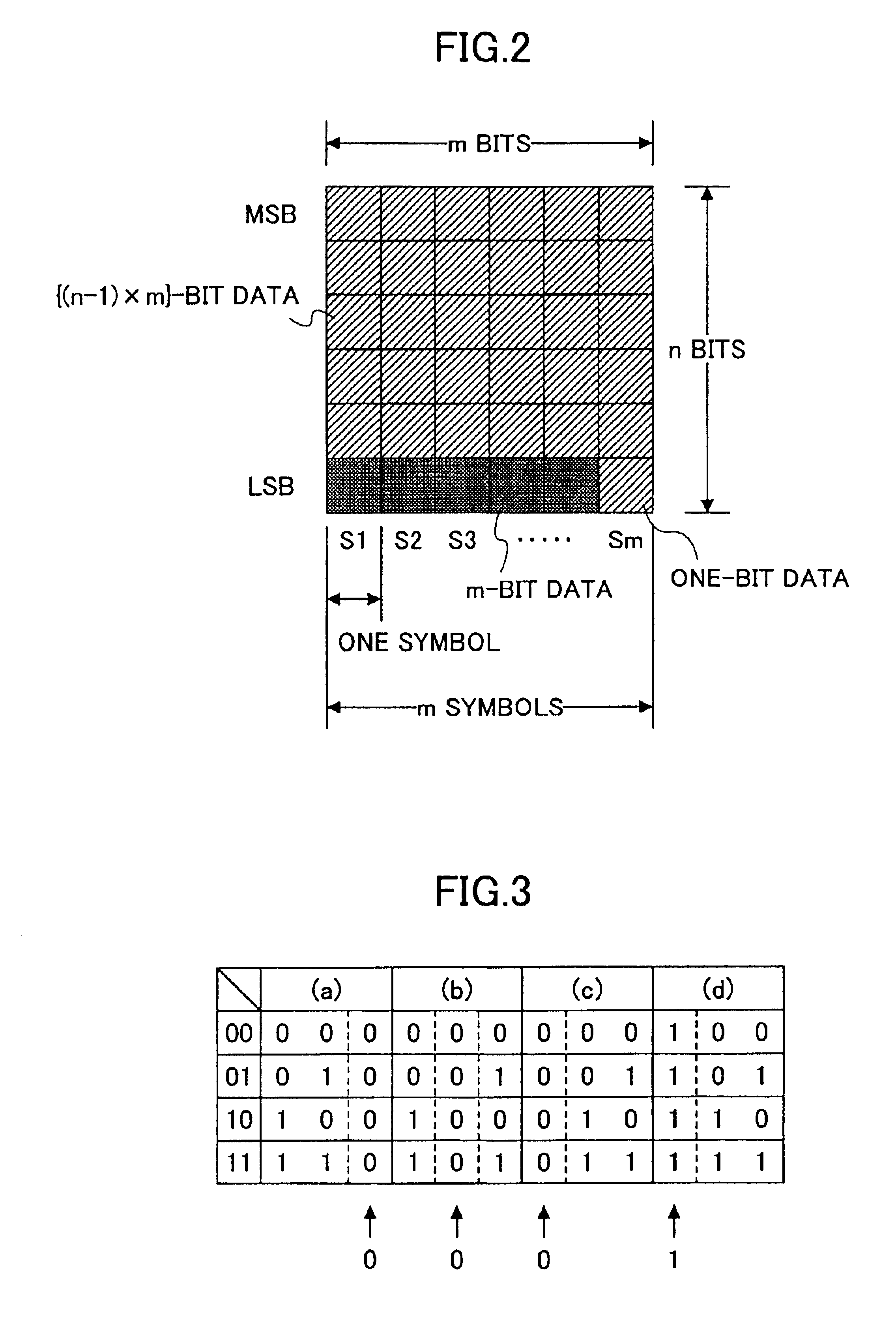Data processing method, circuit, and apparatus with increased accuracy
a data processing and circuit technology, applied in the field of data processing methods, circuits, and apparatuses, can solve problems such as incorrect detection of data, waveform equalization reaches its limit, and multi-level data is wrongly determined
- Summary
- Abstract
- Description
- Claims
- Application Information
AI Technical Summary
Benefits of technology
Problems solved by technology
Method used
Image
Examples
first embodiment
[0080]Next, a description will be given of a data processing method according to the present invention.
[0081]FIG. 2 is a diagram showing a matrix for illustrating the data processing method of the first embodiment.
[0082]Here, the multi-level data is treated as sets of a plurality of symbols (S1 through Sm) with each symbol being n-bit data (n is an integer satisfying n≧2) and each set consisting of m symbols (m is an integer satisfying m≧3).
[0083]In this case, each symbol can take 2n symbol values. MSB means the Most Significant Bit, and LSB means the Least Significant Bit.
[0084]A description will be given of a method of converting binary data to multi-level data.
[0085]First, {(n−1)×m}-bit binary data is arranged in the upper-side (n−1) bits of m symbols in one set.
[0086]Further, (m−1)-bit binary data is converted to m-bit binary data and arranged in the LSBs of the m symbols.
[0087]Thus, the (n×m−1)-bit binary data ({(n−1)×m}+(m−1)=(n×m−1)) is converted to the m symbols of multi-lev...
second embodiment
[0109]Next, a description will be given of a data processing method according to the present invention.
[0110]According to the data processing method of the second embodiment, the (m−1)-bit data is converted to the m-bit data by selecting and using one of two different conversion methods for each set instead of using only one conversion method for all the sets.
[0111]For instance, a numeric string P consisting of “0”s and “1”s arranged to correspond to the sets for selecting the conversion tables of (a) and (b), respectively, of FIG. 4 or 5 is defined as P=0, 1, 0, 1, 0, 1, . . . or P=0, 0, 1, 1, 0, 0, . . . . The conversion table may be determined with respect to each set so that the conversion table (a) is selected in the case of P=0 and the conversion table (b) is selected in the case of P=1. Further, random numbers defined by an initial value and a generation method may be used as the numeric string P.
[0112]Since all the m-bit patterns are thus employed, the data patterns of the s...
third embodiment
[0124]Next, a description will be given of a data processing method according to the present invention.
[0125]In the third embodiment, two-bit data is converted to multi-level data, and the multi-level signal is input as a signal reproduced from an information recording medium or received from a transmission path to be A / D-converted to digital data, from which the multi-level data is determined.
[0126]FIG. 6 is a diagram for illustrating the data processing method of the third embodiment.
[0127]Here, one symbol is two-bit multi-level data, and takes symbol values ranging from 0 to 3. Further, one set consists of four symbols.
[0128]For simplification of description, the number of bits for quantization of A / D conversion is four, and signal data values range from decimal 0 to 15. Further, the symbol values “0”, “1”, “2”, and “3” correspond to ideal signal data values “2”, “6”, “10”, and “14”, respectively.
[0129]FIG. 7 is a table showing the relationship between the signal data value of an...
PUM
| Property | Measurement | Unit |
|---|---|---|
| time | aaaaa | aaaaa |
| recording density | aaaaa | aaaaa |
| lengths | aaaaa | aaaaa |
Abstract
Description
Claims
Application Information
 Login to View More
Login to View More - R&D
- Intellectual Property
- Life Sciences
- Materials
- Tech Scout
- Unparalleled Data Quality
- Higher Quality Content
- 60% Fewer Hallucinations
Browse by: Latest US Patents, China's latest patents, Technical Efficacy Thesaurus, Application Domain, Technology Topic, Popular Technical Reports.
© 2025 PatSnap. All rights reserved.Legal|Privacy policy|Modern Slavery Act Transparency Statement|Sitemap|About US| Contact US: help@patsnap.com



